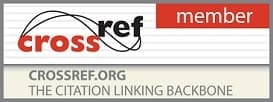- Printed Journal
- Indexed Journal
- Refereed Journal
- Peer Reviewed Journal
P-ISSN: 2394-1685 | E-ISSN: 2394-1693 | CODEN: IJPEJB
Impact Factor (RJIF): 5.38
2015, Vol. 1, Issue 3, Part B
Effect of Different Postures on Peak Expiratory Flow Rate and Peak Inspiratory Flow Rate on Healthy Individuals
Author(s): N. Siva Jyothi, G. Yatheendra kumar
Abstract:
The main purpose of the study was 1) to differentiate the effects of the therapeutic body positioning from the routine body positioning. 2) Physiological effects of different body positions on cardiopulmonary function and oxygen transport. The study includes both males and females of age between 20-30 years; non obese (Body mass index ≤ 30), non-smokers and none of the participants have been engaged in athletic training. Peak inspiratory flow rate and peak expiratory flow rate was taken in standing, sitting, supine and prone positions. Data was analyzed using ANOVA (Analysis of Variance) one way classification at a significance of P<0.05. Mean values of peak expiratory flow rate and inspiratory flow rate differ significantly with the different postures. Coefficient of variation is less for standing compared to sitting, supine and prone. The parameters Peak expiratory and Peak inspiratory flow rate shown a significant change with each positions in the order of standing>sitting>supine>prone.
Pages: 42-45 | 1625 Views 97 Downloads
Download Full Article: Click Here
How to cite this article:
N. Siva Jyothi, G. Yatheendra kumar. Effect of Different Postures on Peak Expiratory Flow Rate and Peak Inspiratory Flow Rate on Healthy Individuals. Int J Phys Educ Sports Health 2015;1(3):42-45.








 Research Journals
Research Journals